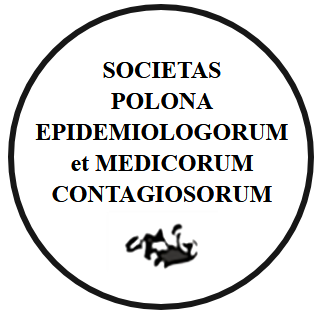RESEARCH PAPER
Adherence to preventive behaviors and perceived risk of Iranian medical students in response to the COVID-19 pandemic: Structural Equation Modeling
1
Preventive Medicine and Public Health Research Center, Psychosocial Health Research Institute, Iran University of Medical Sciences, Iran
2
Information Management Department, ISC, Iran
3
Department of Biostatistics, Tarbiat Modaress University, Iran
Submission date: 2024-06-12
Final revision date: 2024-09-29
Acceptance date: 2024-11-08
Online publication date: 2024-11-15
Publication date: 2024-12-31
Corresponding author
Maryam Mahmoudi
Preventive Medicine and Public Health Research Center, Psychosocial Health Research Institute, Iran University of Medical Sciences, Tehran, Iran
Preventive Medicine and Public Health Research Center, Psychosocial Health Research Institute, Iran University of Medical Sciences, Tehran, Iran
Przegl Epidemiol 2024;78(4):381-392
KEYWORDS
TOPICS
ABSTRACT
Background: The COVID-19 pandemic resulted in a significant threat to people’s lives. Detection of adherence to preventive behaviors and risks perceived by people is essential for infection control. Medical students are future healthcare providers. Objective: This study explored adherence to preventive behaviors and risk perception of the COVID-19 pandemic in Iran’s medical students. Material and methods: In this cross-sectional study, Iranian medical students participated whose preventive behaviors and risk perceptions of COVID-19 were assessed by an online tool. Generalized Structural Equation Modeling (SEM) with a beta-regression family was used for mediation analysis. Results: A total of 654 medical students participated. The mean risk perception of COVID-19 on a 1 to 7 range scale was 3.53±1.7 for themselves and 3.66±1.7 for their family members. The risk perception for disease severity was 2.9±1.5. According to SEM, male sex, COVID-19 history, and living with parents were predictors of adherence directly and through the mediator pathway of risk perception (P <0.1). Briefly, the male sex reduced adherence directly and through risk perception reduction. The history of COVID-19 directly reduced adherence, but through the mediation pathway of risk perception, it increased adherence. However, the total effect was in favor of adherence reduction. Living with parents directly increased adherence but reduced adherence through the mediation pathway of risk perception. However, the total effect was in favor of adherence increase. Conclusions: Although conventionl statistical analaysis did not support the association of risk perception and adherence, the generalized SEM showed risk perception as a potential mediator with a small effect. The present study showed the roles of sex, COVID-19 history, and living with parents as the factors affecting risk perception and preventive behaviors on the basis of SEM results. Among the results, living with parrants was a modifiable factor to increase the adherence.
We process personal data collected when visiting the website. The function of obtaining information about users and their behavior is carried out by voluntarily entered information in forms and saving cookies in end devices. Data, including cookies, are used to provide services, improve the user experience and to analyze the traffic in accordance with the Privacy policy. Data are also collected and processed by Google Analytics tool (more).
You can change cookies settings in your browser. Restricted use of cookies in the browser configuration may affect some functionalities of the website.
You can change cookies settings in your browser. Restricted use of cookies in the browser configuration may affect some functionalities of the website.




